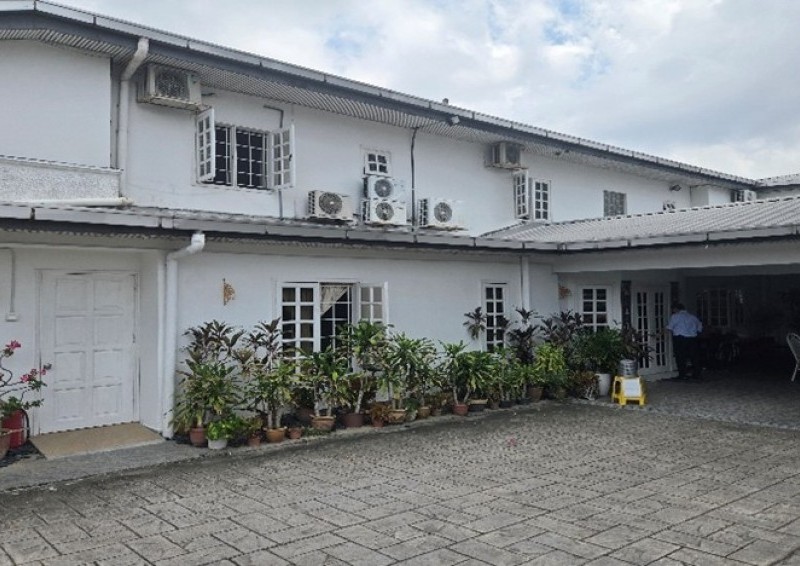Skin conditions from PPE
By Nataliya Slesarenko
Health and Safety policies guide healthcare workers in the use of personal protective equipment (PPE) for their own safety and that of the people they support. PPE significantly impacts the skin and leads to the development of unpleasant skin conditions.
According to statistics, nearly 50% of nurses suffer from work-related skin disease, such as allergic contact dermatitis and irritant contact dermatitis (Dermnet NZ, 2021). The most common skin issues include latex allergy, contact dermatitis and mechanical injury.
There are different risk factors that influence skin condition, such as:
- Exposure to chemical agents that are used in healthcare (cleansers, medications, latex, etc.) and may cause allergic reactions and skin irritation, worsening with long term exposure.
- Long-time exposure, wearing PPE such as masks.
- Frequent hand-washing and other wet work, leads to dermatitis.
- Frequent contact with sharp instruments (needles, lancets, etc.) increases the risk of mechanical injury.
Skin is the largest organ of our body, and one of its main functions is to provide a barrier between our organism and the environment. It regulates water loss from inside the body as well as protects the organism from external harmful influences by mechanical, chemical, and microbial substances.
For barrier function, skin cells produce the hydro-lipid layer that keeps the human skin surface in a normal pH range of 4.5.to 5.5. The level of PH varies in different body parts and depends on the skin condition. For example, the Ph level of oily skin is around 4.0-5.2, normal skin’s Ph level can be between 5.2 and 5.7, Ph of dry skin vary from 5.7 to 7.0. The normal pH for the feet and palms is 6.5-7.0, and for the scalp is 4.5-5.5.
Normal pH level of our skin may be affected by many different causes, such as nutrition, environment, the use of inappropriate cosmetics, ultraviolet light, general diseases, the use of certain medications and even stress. (Lezhneva, E., 2018)
Unfortunately, the work environment of the health care professional can create a change in the skin pH, changes in skin integrity and negative changes in skin condition.
Following the infection prevention and control policies, clinical staff frequently wash hands using soap and water, aggressive disinfectants, and detergents. For instance, tap water has pH from 6.5 to 8.5 and soap pH can reach 11.0. Thus, constant hand washing makes the skin extremely dry and vulnerable for the development of unpleasant skin conditions.
Tips for prevention of hand skin irritation
- Use an alcohol-based hand cleanser without additional fragrances and colours. Research shows that soap and water for hand washing causes more irritation compared to sanitisers. However, soap and water should be used after working with blood or other body fluids when the skin is visibly soiled or contaminated.
- Use the correct gloves. Latex gloves ensure the best protection in healthcare but may cause allergic reactions, so nitrile gloves can be used instead. Vinyl gloves should not be used for healthcare workers in direct contact with bodily excretions. Powder in gloves may also cause irritation, allergies, and dry skin.
- Inform your manager if you have skin issues and asked to be provided with other type of gloves that may be better.
Treatment of hand eczema includes:
- Minimising/avoiding contact with irritants and allergens, if possible
- Ensure a healthy skin barrier by using appropriate emollients/moisturiser during work hours and at home
- Use topical corticosteroids for deteriorated skin condition
- Use antibiotics for secondary infection.
- Alternative methods such as the use of warm oil masks and wax baths.
However, damage to the skin is not limited to just the hands. The skin of other parts of our body may be affected by wearing PPE due to overheating, mechanical skin damage (rubbing) and allergic reactions.
Face masks - This has become very obvious during the recent Covid pandemic, when people, especially in healthcare, wear face masks more often and for longer periods. This may lead to skin irritation, rashes, itchiness, redness of the face, dryness, and desquamation, swelling, pain and tingling, especially if a mask is worn for more than 4 hours daily.
Mask acne is a common problem that may cause psychological distress due to cosmetic defects on the face. Mask wearing can make pre-existing conditions far worse, such as acne or rosacea. (Dermnet NZ, 2021)
Humidity and increased temperature from breathing under a face mask may negatively impact the skin barrier, increasing the growth of microflora, follicular occlusion, and secretion from sebaceous glands. Mechanical skin damage may occur due to friction and pressure. (Dermnet NZ, 2021)
Preventative interventions can be used before, during, and after wearing a face mask.
Before:
- Use a mild cleanser and a light moisturising cream to protect the skin and reduce friction.
- Use a lip balm.
- Try to avoid using make-up toners and fatty creams. Those products may be irritative and lead to allergic contact dermatitis.
- Use correct treatment for pre-existing skin conditions
- Do not use disinfectants on a face mask if it is reusable.
- Wash reusable face masks daily.
During the use of a face mask:
- Choose the right mask; the correct size, form and fabric that will be comfortable and does not cause irritation
- Use something between your skin and the mask to reduce irritation and friction, link ear loops behind the head by using available devices (e.g. paperclip)
- Take off a mask to ventilate the skin and mask every hour/30 min if possible, minimise duration of mask-wearing
After:
- Totally take off the mask in the mask-free areas
- Regularly check the skin for any changes and start to treat it immediately
- Use a moisturiser to improve the skin barrier
- Avoid using the same mask without washing it prior
- Avoid using a fabric softener when washing fabric masks
- Avoid frequent cleaning of the face (morning and evening cleaning should be enough)
- Do not use facial peelings or abrasive masks however if its needed then no often more than once a week
Wearing PPE for long periods of time is not easy, its not usually comfortable and can create significant health risks. However, the PPE is used to minimise risk to people, both the wearer and others around them. Careful use of this with as much prevention, common-sense as possible and careful disposal will keep people as safe as possible.
Back to Blog








